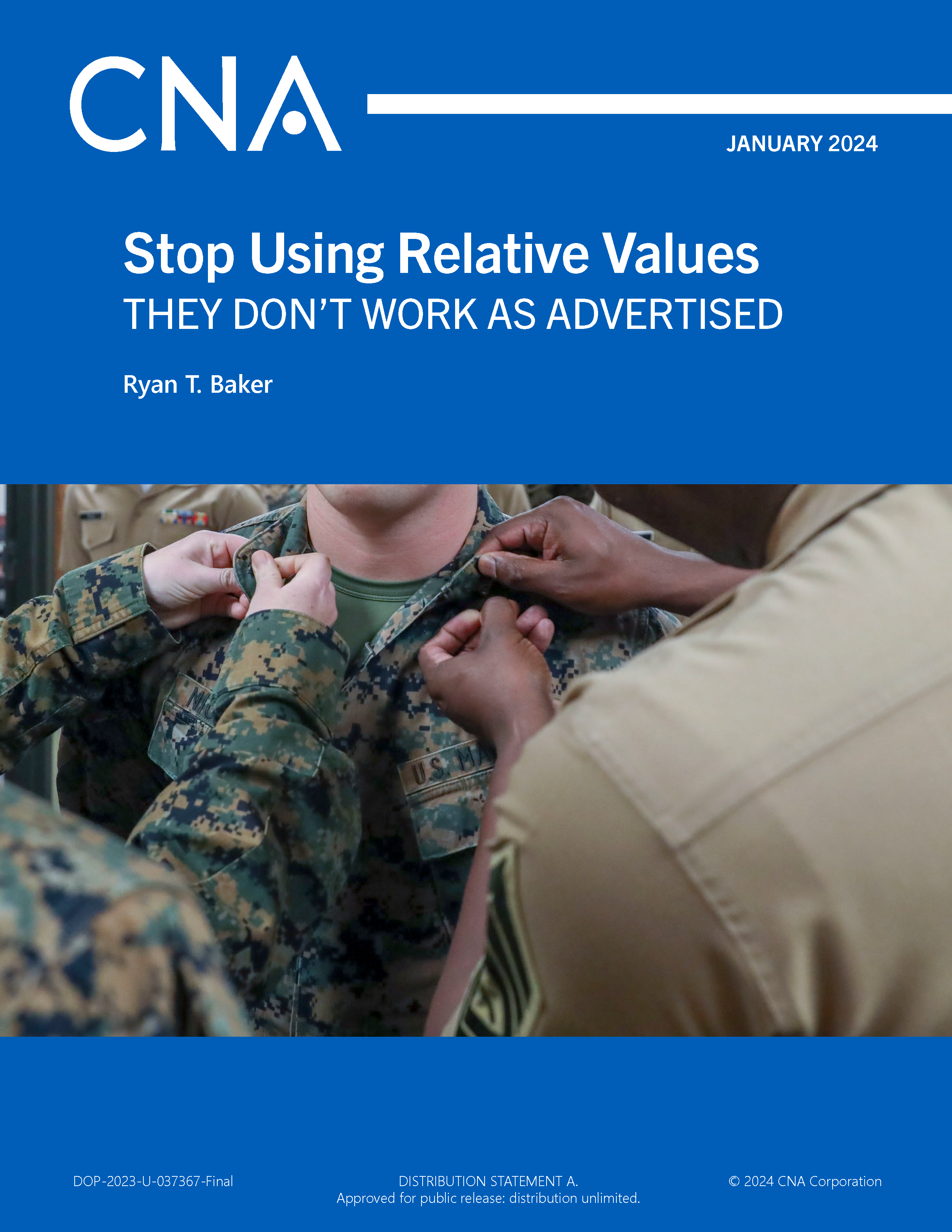Fitness report relative values (RVs) are a peculiar feature of the Marine Corps’ performance evaluation system (PES). Few understand how they are calculated, but they play an important role in the way the Marine Corps selects Marines for promotion and special assignments.
However, these values are unreliable. RVs mask important information from selection boards and misrepresent the location of reports within reporting senior (RS) profiles. In other words, they don’t work as advertised, and the Marine Corps should stop using them.
This problem has gone largely unnoticed because the structure of the PES makes it hard to see. Right now, almost no one is allowed to see RVs alongside the RS profiles they summarize. RSs can see their profiles, but not the RVs of the reports they write; conversely, selection boards can see the RVs, but not the RS profiles they were derived from. If anyone were to put the two together, they would see that RVs are quirky numbers that obscure important information. They would see, for example, that a report can simultaneously be in the top third of the RS profile and in the bottom third of the RV scale, that the middle “third” can be empty, and that a report’s cumulative RV can increase even as it remains the lowest report in the profile. Just as important, they would realize that the current process makes it impossible for selection boards to detect these quirks from inside a board room.
Correcting this problem has a new urgency given the importance of successful talent management to the Marine Corps’ future operating concepts. As the 38th Commandant put it, “Our modern operational concepts and organizations cannot reach their full warfighting potential without a talent management system that recruits, develops, and retains the right Marines.” Unfortunately, the only way to retain the right Marines in the current “up or out” system is for selection boards to identify and select them. RVs make that task harder.
In 2015, I coauthored a short article for the Marine Corps Gazette that discussed some problems with RVs and proposed ways to address them, but that article failed to prompt much change and only scratched the surface of the problem. Since RVs remain poorly understood and their shortcomings still largely unacknowledged, a more detailed follow-up is necessary—hence this paper.
I am not going to retread all the ground covered in the 2015 article, but I will review some of the key ideas on the way to presenting several new ones. My approach is straightforward: I show RVs alongside the RS profiles they were derived from. In the tables and figures that follow, I present examples that show what selection boards currently cannot see, revealing just how ambiguous and misleading RVs can be. Later in the paper, I draw on ideas from the field of statistics to show that RVs in small profiles are often statistically indistinguishable from random noise, and that the way selection boards use RVs involves a well-known issue with data summaries that statisticians have warned people about for decades. I will also highlight an important tension between RVs and the legal requirements for promotion boards.
Based on my analysis, I make three major recommendations:
- Stop using relative values. RVs should not be used by selection boards or as a general-purpose measure of performance. There are better and more transparent ways to weigh fitness reports.
- Display RS profiles graphically on the master brief sheet (MBS). Many RS profiles are too small for summary statistics to be useful, and report averages are often distributed in ways that selection boards should know about when weighing fitness reports. I provide an example of a graphical MBS later on.
- Separate active and reserve RS profiles. The Marine Corps is required to consider active and reserve Marines separately for promotion, but RVs and RS profile dynamics force active and reserve Marines into competition with one another in the board room.
To be clear, this paper focuses on only RVs—not on other issues with the fitness report system. For example, I do not address the tension between the attribute mark descriptions and the logic of an RS marking philosophy; the contradiction between the distributional assumptions of RVs and the comparative assessment; or how boards should weigh reports from excessively short observation periods, inconsequential billets, periods of academic instruction, or similar occasions. In this paper, I focus narrowly on the problems that arise from RVs and how best to address them, with the understanding that other issues also merit attention.
For brevity, I will assume the reader is familiar with the PES and the Marine Corps’ selection board process. For those unfamiliar, I recommend reviewing the relevant order (MCO 1610.7B, commonly referred to as the “PES Manual”) and the educational materials on the websites of the Performance Evaluation System Unit (MMPB-23) and Officer Promotions Unit (MMPB-10). Although few of these references are free of errors (at least not as of this writing), they contain enough background to guide the reader.
Download reportDISTRIBUTION STATEMENT A. Approved for public release: distribution unlimited.
Details
- Pages: 31
- Document Number: DOP-2023-U-037367-Final
- Publication Date: 1/12/2024
